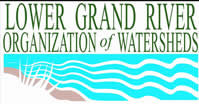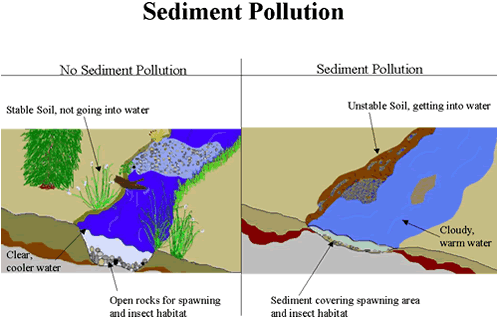Lower Grand Watershed Interactive Tool (WIT) - Sediments


Sediment is soil that is transported by air and water and deposited on the stream bottom.
Sediment pollution is an excessive amount of organic and inorganic particles entering the stream system. Sediment can come from developed urban areas and typically includes road stream crossings, stormwater runoff, and construction areas. Sediment can also come from farming sources such as croplands and animal crossings, or from recreation such as repeated access on eroding banks. Sedimentation is the act or process of depositing sediment. Sedimentation can be caused by spates, which tear at the soil along unprotected banks. Flashy flows, or spates, are when the water level rises and falls extremely quickly during precipitation events.
The proliferation of impervious surfaces in urban areas results in the increase of stormwater and its facilitated movement to nearby water bodies. Spates cause flash floods and erosion that can damage habitat both in and out of the water. Sedimentation also contributes to a decrease in water clarity affecting how sunlight penetrates the water, and thus impacting plant growth. Sediment also absorbs heat, warming up the water body, and reduces dissolved oxygen in the water. The amount and consistency of saturated dissolved oxygen is important to some cold-water species, specifically trout and stoneflies. Sedimentation can also cover fish spawning grounds and insect habitat, causing a decrease in fish production and loss of insects as a food source.
Online References:
Ottawa County Drain Commissioner's Office - Drains and Soil Erosion Links
